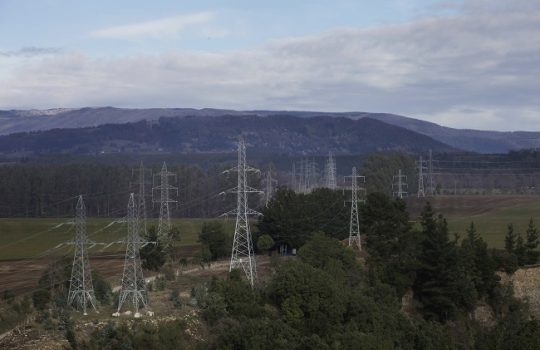
As a result of the increase in charges and even the emergence of new charges associated with the implementation of reforms such as the Transmission Law.
Increased risks for consumers from changes in electricity market identified
(Diario Financiero) The effects of the transformation that the electricity system has undergone in the last few years go on and on. The reform of the Transmission Law and the phenomenon of migration of customers from the regulated system to the free system threaten to affect people’s pockets through their monthly bills.
This is the warning of the consulting firm Systep, linked to the academic Hugh Rudnick, which warns that at the local level there are no consumer organizations sufficiently prepared to defend themselves in these situations, raising the question “who will be able to defend us?
“At the local level, the situation is regrettable. Consumers (and citizens) do not have a clear space to participate in regulatory and technological discussions, having to accept the decisions made by the authority, and may face situations in which they will be disadvantaged,” the consulting firm states in its most recent monthly report.
At least two of the modifications incorporated in the Transmission Law, in effect since July 2016, have impacted and will continue to directly impact individual consumers, bulking up the final balance of their monthly bills.
The first of these is the decision to transfer the payment for the new transmission works in full to the claim. Prior to the modification, 80% of the expansion of the electricity networks was paid for by generation, leaving only the remaining 20% to be paid by the users.
And although historically the level of investment projected for this item did not exceed US$ 100 million per year, as of 2014 and as a result of the severe restrictions on energy transportation capacity, this amount has increased, tripling in the first planning carried out after the legislative change.
In fact, the national transmission expansion plan amounts to US$ 2,684 million in works that, although they will begin to be paid for as soon as they come into operation, will be entirely charged to the users of the electricity system.
“While the electricity policy resolves that this form of remuneration ultimately benefits the end consumer, there are currently no simple mechanisms to request clarifications or challenge these investments with a reasonable time for analysis,” warns Systep, as only large consumers were able to go to the Expert Panel to try to challenge this planning.
The second element of the Transmission Law that will hit consumers without giving them any margin for reaction is the budget of the National Electricity Coordinator, the autonomous non-profit corporation under public law, with its own assets and indefinite duration, which after the interconnection came to replace the Economic Load Dispatch Centers and whose creation was included in this regulation.
Once again it is the consumers, in relation to the energy consumed, who absorb this budget, which between 2017 -when the previous structure operated- and 2018 -with the agency already integrated- increased by 54%, according to data from Systep.
“Although this increase can be justified, there are no mechanisms for participation in the definition and correct execution of the final budget, where customers can give their opinion on an aspect that, although in a moderate way, directly affects their final tariffs,” they comment.
Transfer of free customers
The massive migration of customers from the regulated system to the free system also threatens to impact people’s accounts. This high pass-through, according to the consultant’s estimates, could produce distortions and increases in their tariffs, considering the decrease in demand and the possible overcontracting of the system.
Another risk lies in the formula for remunerating the so-called complementary services, which are the services to support the variability of renewable energies (wind and solar). Under the current legal framework, the lawsuit is obligated to finance these costs, without having had the option to participate in this discussion.
The future modernization of the Distribution Law, which is expected to be submitted to the legislative process in the middle of next year, could pose another series of threats, which is why the consultant calls on consumers to be attentive and strengthen the defense opportunities of the instances that represent large electricity consumers, being the only ones that can tangentially favor people in their condition as electricity users.
International models
Systep mentions examples of consumer groups such as the American Public Power Association (APPA) in the United States, which protects the interests of its members before Congress, the White House, administrative agencies, regulatory bodies and courts.
The Energy Intensive Users Group (EIUG) of Great Britain ensures the security of energy supply at industrial level, taking into account internationally competitive prices.
Finally, the International Federation of Industrial Energy Consumers (IFIEC) in Europe represents consumers for whom energy represents a major component of their production costs. Its mission is to ensure an open, transparent and competitive electricity and gas market, so that consumers can negotiate the best possible conditions.





